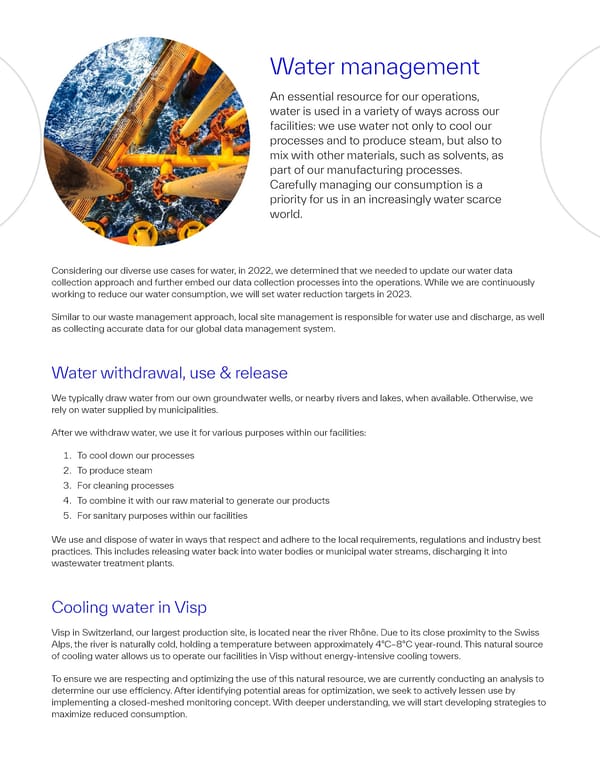Water management An essential resource for our operations, water is used in a variety of ways across our facilities: we use water not only to cool our processes and to produce steam, but also to mix with other materials, such as solvents, as part of our manufacturing processes. Carefully managing our consumption is a priority for us in an increasingly water scarce world. Considering our diverse use cases for water, in 2022, we determined that we needed to update our water data collection approach and further embed our data collection processes into the operations. While we are continuously working to reduce our water consumption, we will set water reduction targets in 2023. Similar to our waste management approach, local site management is responsible for water use and discharge, as well as collecting accurate data for our global data management system. Water withdrawal, use & release We typically draw water from our own groundwater wells, or nearby rivers and lakes, when available. Otherwise, we rely on water supplied by municipalities. Aer we withdraw water, we use it for various purposes within our facilities: . To cool down our processes . To produce steam . For cleaning processes . To combine it with our raw material to generate our products . For sanitary purposes within our facilities We use and dispose of water in ways that respect and adhere to the local requirements, regulations and industry best practices. This includes releasing water back into water bodies or municipal water streams, discharging it into wastewater treatment plants. Cooling water in Visp Visp in Switzerland, our largest production site, is located near the river Rhône. Due to its close proximity to the Swiss Alps, the river is naturally cold, holding a temperature between approximately 4°C–8°C year-round. This natural source of cooling water allows us to operate our facilities in Visp without energy-intensive cooling towers. To ensure we are respecting and optimizing the use of this natural resource, we are currently conducting an analysis to determine our use eciency. Aer identifying potential areas for optimization, we seek to actively lessen use by implementing a closed-meshed monitoring concept. With deeper understanding, we will start developing strategies to maximize reduced consumption.
 2022 Sustainability Report | The Power of Science & Sustainability Page 23 Page 25
2022 Sustainability Report | The Power of Science & Sustainability Page 23 Page 25